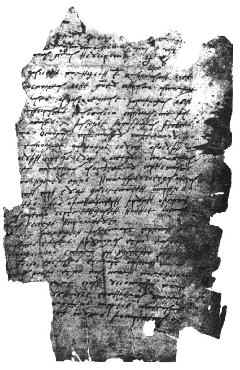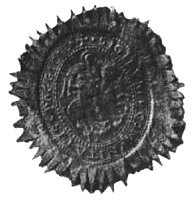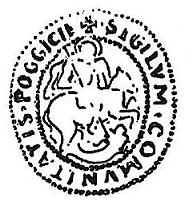|
|
 |
|
| Sitno is one of twelve main Poljica villages - so called katuni. The
beginnings of Sitno as a village are located in Mosor valley behind St Cosmas and Damian
chapel. In the Statute of Poljica, which was transcribed in the
St Clement church in Sitno, stands (an original Croatian quotation from 1665, in which
Sitno is mentioned):
"U ime Gospodina Boga Amen. Statut poljicki isuci statut iz staroga novi cinimo
na lita Gospodina Isukrsta 1440., a sada pripisujemo na 1665 febrara na 10(I) u Poljici u
carkvi svetoga Klimenta pod Sitno".
In later centuries Sitno has been developing in lower areas where Sitnjani (the
people from Sitno) settled and cultivated their fields and clearings. Thanks to diligent
and hard work, and the mild Mediterranean climate, rich vineyards, olive groves, fruit and
vegetable gardens arose. By settling lower parts of its area, new hamlets were formed:
Gajine (Lolici), Sitno Gornje, Sirotkovici, Visak, Jasenovo, Dracevica i Dvori.
Numerous churches and chapels in Sitno are the best
witnesses of faith and diligence in this small Poljica village.
- Churches:
The oldest one, originating in 12th century is the church of St Clement, then there is the
church of St Luke, and the youngest one is the church of The Holy Trinity (finished in
1905).
- Chapels:
In Jasenovo there is the chapel of the Presentation of Virgin Mary, in Visak there is St
John, in Sirotkovici is the chapel of The Presentation of the Virgin Mary, in Sitno Gornje
St Roko, in the hamlet Gajine there is the chapel of St Nicolas and on the Mosor peak
above Zagradje valley there is, according to some estimates, the oldest chapel in Sitno,
St Cosmas and Damian.
|
|
THE STATUTE OF POLJICA
The oldest preserved manuscript of the Statute originates from 1515 and it
is conserved in the Archive of The Croatian Academy of Science and Art, in Zagreb. It
represents the third redaction of the Statute, composed around 1485. The second redaction
of The Statute originates from 1440 and the original Croatian quotation from it is as
follows:
"U ime Gospodina Boga Amen. Statut poljicki isuci statut iz staroga novi cinimo
na lita Gospodina Isukrsta 1440."
The term "izuci" means excellent, and it is a translation of Latin word
"eximius". Therefore, in the language of law, the term "isuci"
can be explained as an "authentic copy".
The first redaction, according to V. Mosin, was written at the end of 11th and the
beginning of 12th century, in the time when the peace agreement called "Pacta
conventa" was signed between the Hungarian king Koloman and Croatian
representatives (Miroslav Pera, Poljicki statut, Knjizevni krug, Split 1988.)

The first page of the Statute of Poljica from 1440 (Archive of The
Croatian Academy of Sciences and Arts, Zagreb)
More recent redaction from 1665 has supplemented title (the original Croatian quotation):
"U ime Gospodina Boga Amen. Statut poljicki isuci statut iz staroga novi cinimo
na lita Gospodina Isukrsta 1440., a sada pripisujemo na 1665 febrara na 10(I) u Poljici u
carkvi svetoga Klimenta pod Sitno".
Every law in the ancient Poljica Principality was unwritten at the
beginning, and afterwards it was written in the Statute of Poljica using Croatian cyrillic
script (bosancica). That process was predominantly done by glagolitic priests from the
church of St Clement. That church had great wealth in lands, and it could keep scribes and
buy paper, which was very expensive in those days.
During Turk domination, glagolitic priests escaped
from Poljica and found relief on the island of Brac, in the Blaca
desert, in the famous glagolitic monastery where the last priest was don Niko
Milicevic.
The Statute of Poljica on the Internet
- Poljicki statut -
Studia Croatica |
|
THE POLJICA PRINCIPALITY
 |
 |
| The Great Seal of the Poljica Principality |
The Small Seal of the Poljica Principality |
|
|
Poljica got their name from the small fields that were harvested in
villages around the mountain Mosor, and which enabled its population to survive. These
small fields are called poljca in Croatian, and that was preserved in the name of
the area: Poljica.
The tradition of Poljica tells that the three sons of Croatian king Miroslav, namely
Tjesimir, Kresimir and Elem found shelter in the Poljica in 949 when their father was
murdered by ban Pribina.In the center of the Principality, on the stone hill Grac, the people of Poljica built the
church dedicated to St George and they gathered around the church at the beginning of the
13th century and formed their own county-principality. They divided it in twelve
"katuna’s" which were named after twelve main villages, including Sitno. Every
"katun", early on St George day (23rd of April), had been electing its
representative, and after religious ceremony, they were coming down with the people at Podgradac, and they were electing the great Prince and
three judges, for the period of one year.
The newly founded Poljica county inherited old prefeudal Croatian laws from the Klis
county, and it soon added some new laws, based on mutual agreement and the decision of
Poljica population which were gathered at the election place of the new great Prince of
Poljica. The most important laws were those about buying and selling of land and those
about pasture. All these laws were unwritten at the beginning, and afterwards they were
written in the Statute of Poljica using Croatian cyrillic script.
During 14th century two Croatians from northern Croatia, Juraj Rajcic and Juraj
Drazojevic, represented Poljica in political conflict with the city of Split. They did it
very well and they were invited, together with their families, to settle in Poljica. They
accepted the invitation, and local people named them royal "vlastela", creating
difference between them and local noblemen, known as "didici". Vlastela
continued to represent Poljica in foreign affairs, and one of their successes was that
Bosnian kings, when they gained control over Poljica and Split (for a short period),
didn’t join the marine part of Poljica with Split. They had similar success when Venice
occupied Split (1420) and Poljica (1444).
When Turks began to approach Poljica, the people of Poljica abandoned their old flag
with the Moon and the Rising star, and accepted the new one, with St George killing a
dragon. During 16th and 17th century Poljicani were in continuos conflict with Turks.
In 1530 herzegovian sandzak Ahmetbeg ferociously attacked
Poljica with 10000 soldiers and they camped at Podgradac. That night a young girl from
Poljica, Mile Gojsalic, seduced Ahmetbeg and lighted
gunpowder in the camp. She was killed together with a great number of Turk soldiers, and
her sacrifice helped the people of Poljica to defeat Turks in the night battle.
In 1648 the great battle for the liberation of Klis took place, and more than 1200
soldiers from Poljica demonstrated their heroism.
On the 25th of September 1686 the battle for the liberation of Sinj took place, and the
first flag on the Sinj fortress was the St George flag from Poljica (the Supreme Venetian
Commander confirmed that in his report).
Poljica was finally liberated from Turks in 1699, and life in Poljica was improving. In
1725 Poljica had more than 6000 inhabitants. The churches were built and the literacy rate
was growing. The Poljica glagolic seminary in Priko, near the mouth of the Cetina river
and beside the old church of St Peter, had important role in that process. The seminary
was opened in 1750.
In 1805 France took the control over Dalmatia from Austria (Austria was governing from
1799). The people of Poljica wanted to maintain their self-rule, like they had under
Hungarian-Croatian kings, Venice, Austria and the Ottoman Empire. But the Frenchmen
ordered mobilization in Poljica, which was unacceptable for Poljica, because they never
served in foreign armies. The Russian navy, which was stationed on the Adriatic, offered
their help. On the 4th of June 1807 Poljica defenders attacked French troops in Duce. The
Poljica resistance was destroyed by marshal Marmont. On the 10th of June 1807 the French
governor for Dalmatia declared that 600 years old Poljica Principality was abolished.
When marshal Marmont was passing through Poljica with his troops, he learned about
Poljica laws and government structure. In a book with his memories he wrote:
"Poljica (...) are easily defended. The loneliness of these lands, and natural
resources are such that the people were free, and even Venetians gave them privileges.
They did not pay any taxes, they had their own government, they were electing their
leaders and they didn’t have to recruit their soldiers or sailors. The wish to take away
these privileges from them was the reason of their discontent. Surely, the look on this
small country speaks in favor of their way of government. There is nothing so neat and
regular as their farming, and nothing more beautiful than their villages."
After France was defeated in 1815, the Poljica Principality remained under Austrian
government until the World War I, and it never gained previous administrative and
political structure. After the war, the destiny of Poljica is similar with the other parts
of Croatia, as a part of the former Yugoslavia. The Principality never retrieved the local
self-rule that it had during many centuries.
Poljica on Internet -
From
the history of Omis area and Poljica (in Croatian) |
|
 |
|
|
|